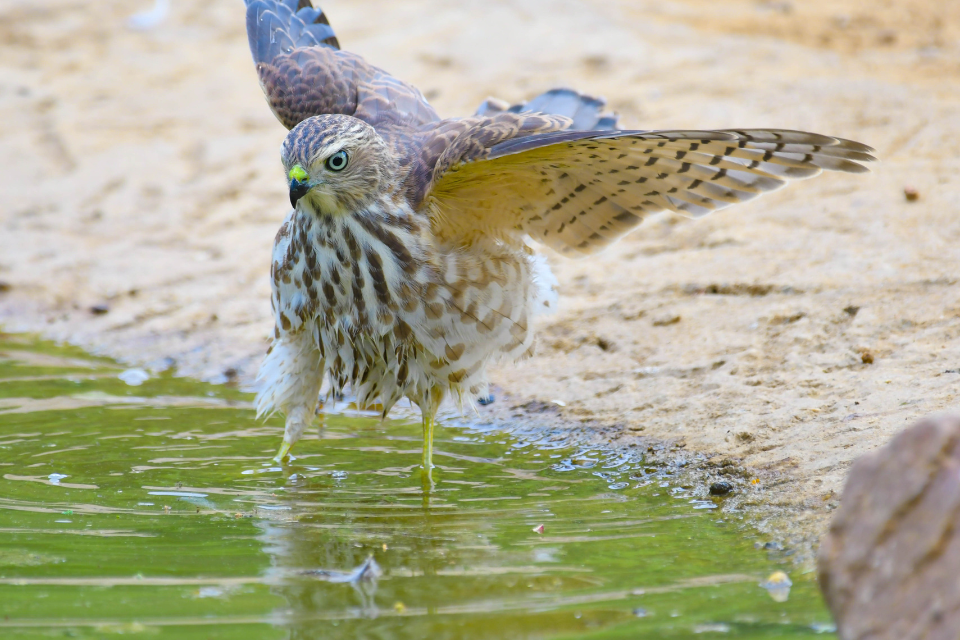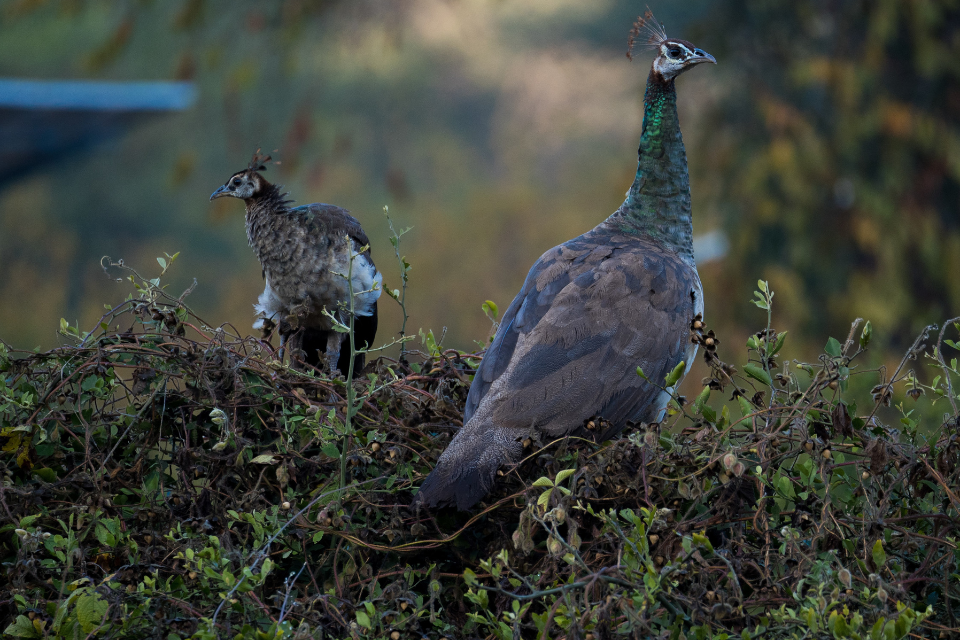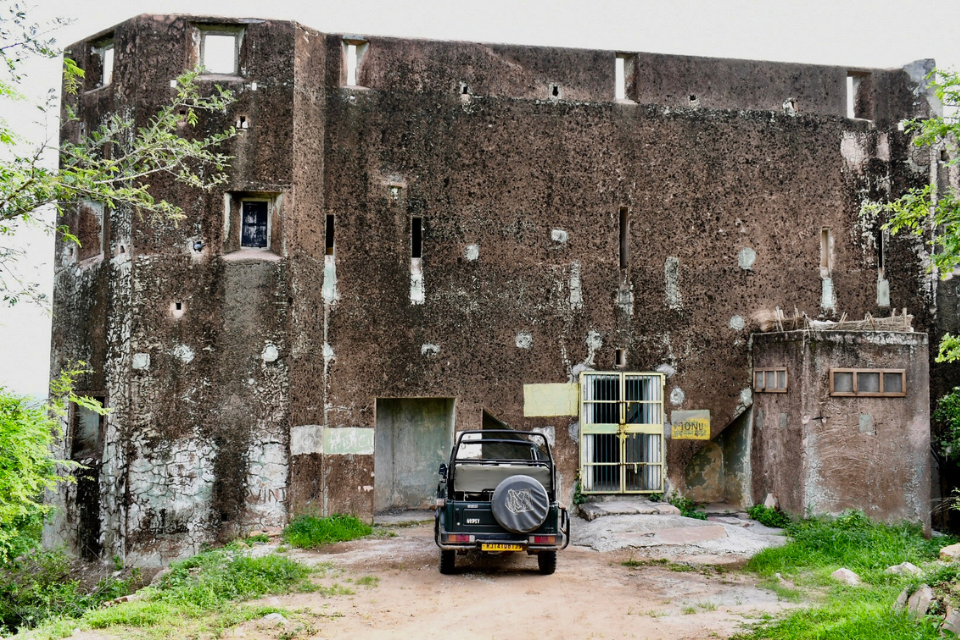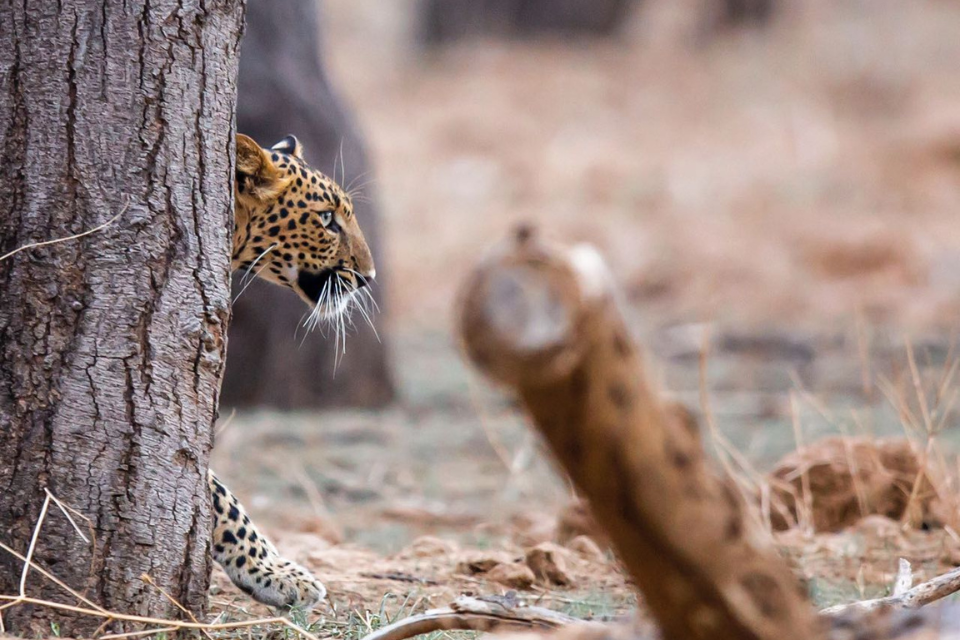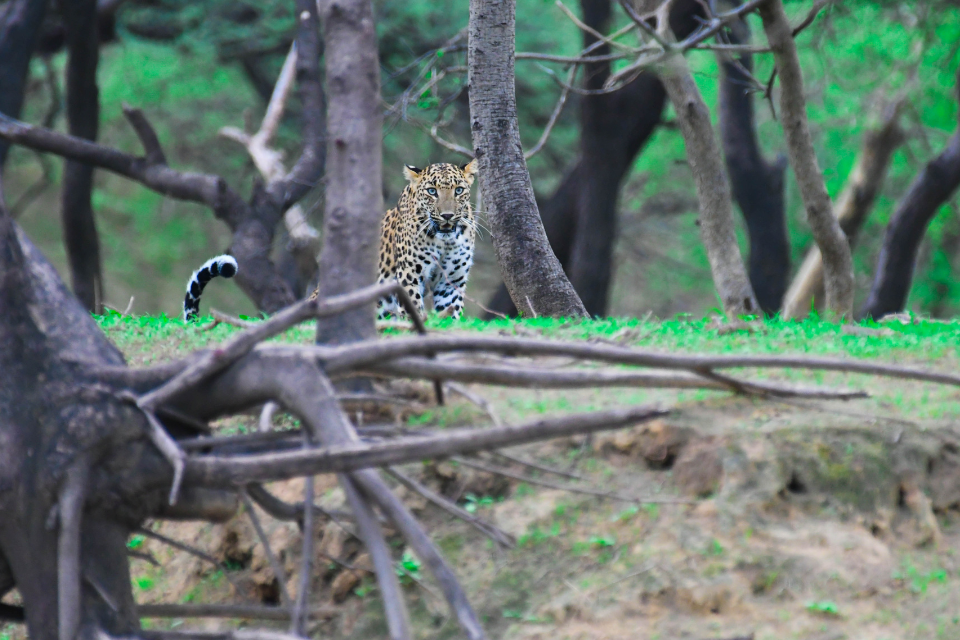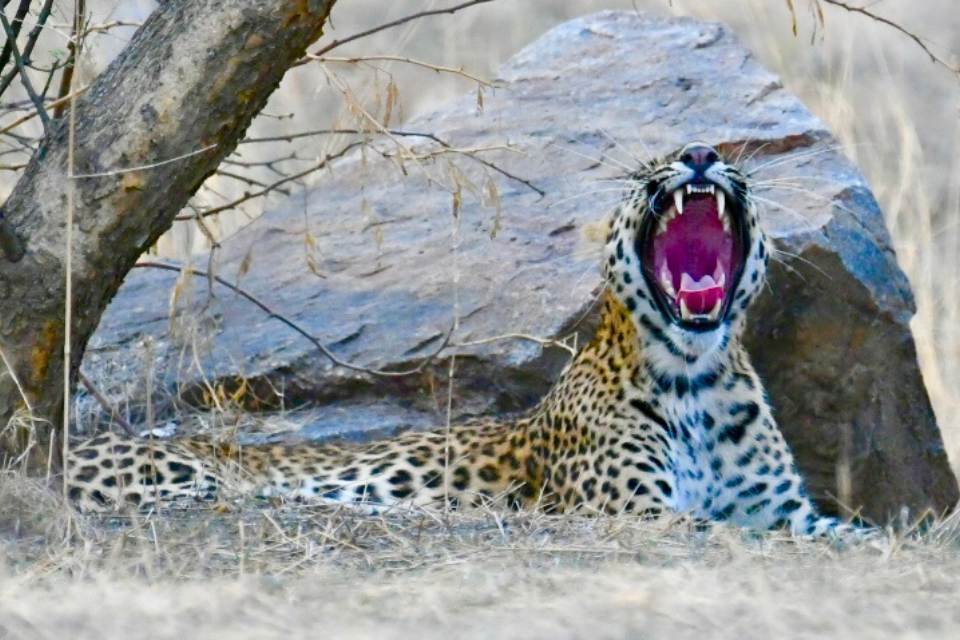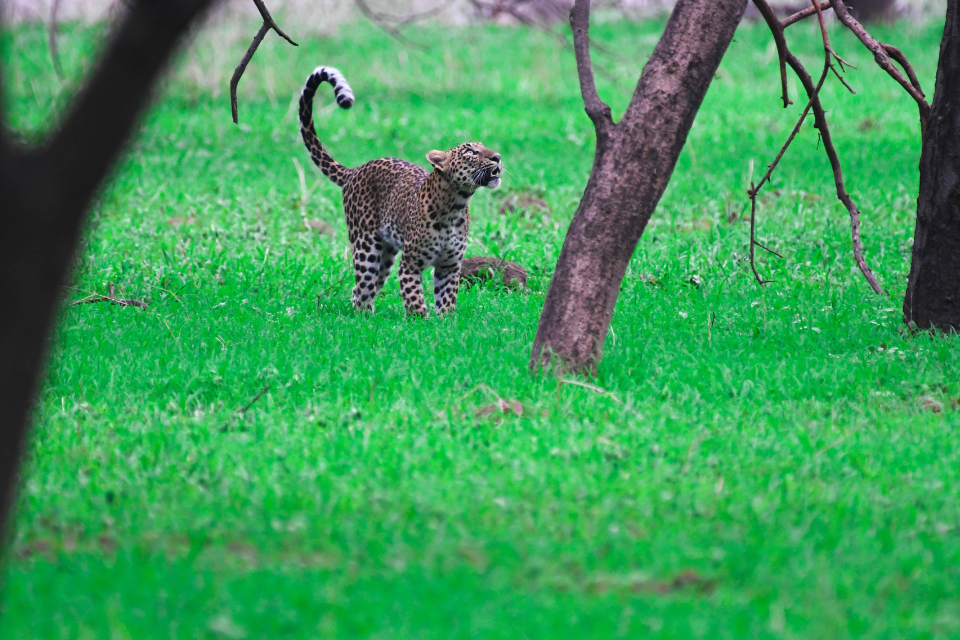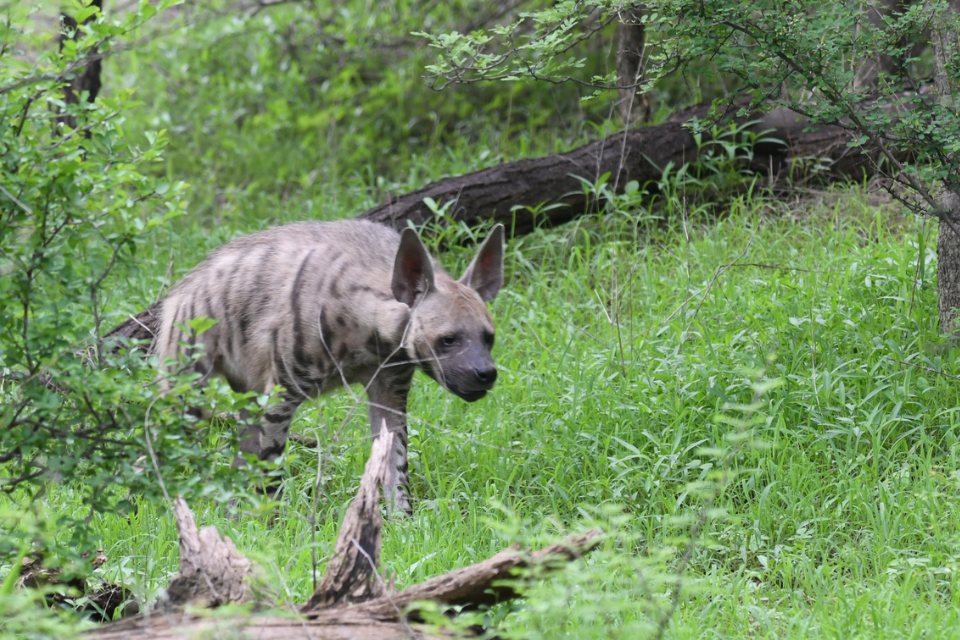- May 19, 2025
Birding in Rajasthan: Top 10 Species and Where to Spot Them
Rajasthan’s vast landscapes—from arid deserts to lush wetlands—make it a birdwatcher’s paradise. With over 500 recorded species, the “Land of Kings” offers an incredible range of habitats in which to observe both resident and migratory birds. This guide highlights the top 10 must‐see species, the best locations and seasons to spot them, plus practical tips to plan a successful birding trip in Rajasthan.
- Indian Roller (Coracias benghalensis)
Why It’s Special: Known locally as the “Neelkanth,” this brilliantly colored bird—with striking blues on wings and tail—is India’s national bird of motion and color.
Where to Spot:
- Jhalana Panther Safari (Jaipur): Roadside wires and tree perches.
- Ranthambore Buffer Zones: Open clearings near lakes.
- Sariska Outskirts: Along NH-248 through scrub forest.
Best Time: Year-round, but breeding season (April–June) yields vibrant plumage and courtship displays.
Photography Tip: Approach slowly in an open jeep; rollers often return to the same perch repeatedly.
- White-throated Kingfisher (Halcyon smyrnensis)
Why It’s Special: A flash of turquoise and chestnut, this kingfisher’s loud “kee‐ki‐ki” call alerts you long before you see it.
Where to Spot:
- Man Sagar Lake (Jaipur): Edges of Jal Mahal.
- Keoladeo Ghana National Park (Bharatpur): Perched on reeds and dead branches.
- Sojat and Soor Sagar Lakes: Seasonal wetlands near Pali.
Best Time: October–March, when water levels are moderate.
Field Tip: Sit quietly at dawn near water’s edge; they dive swiftly for fish and frogs.
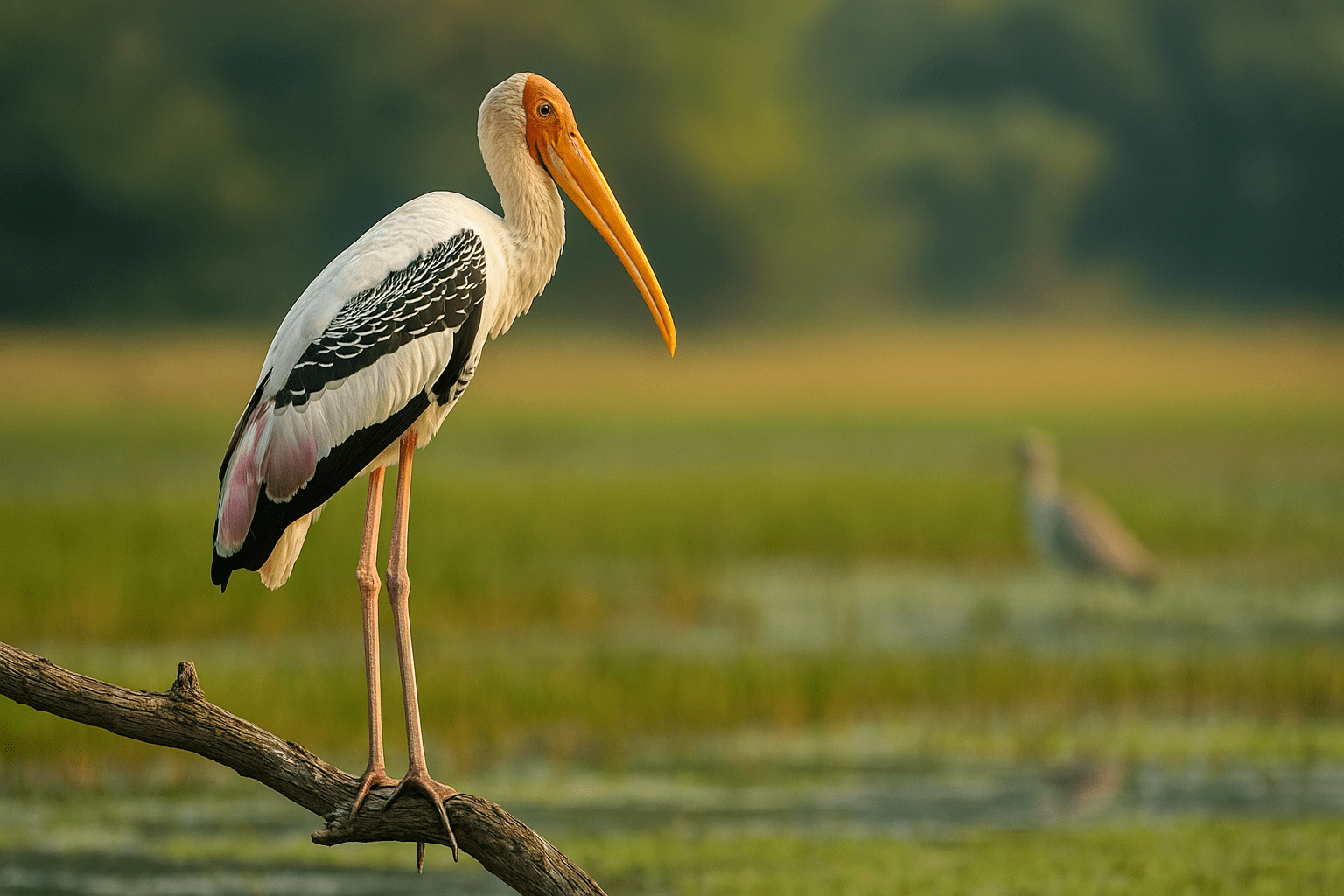
2nd Para
- Sarus Crane (Antigone antigone)
Why It’s Special: The world’s tallest flying bird, revered in Indian folklore for its lifelong pair bonds.
Where to Spot:
- Keoladeo Ghana NP (Bharatpur): In marshy plains.
- Tal Chhapar Sanctuary (Churu): Grassland depressions.
- Flooded paddy fields around Kota in monsoon.
Best Time: November–February, when flocks gather in flooded grasslands.
Observation Tip: Use binoculars at 100–200 m range; pairs often perform dance rituals on open ground.
- Demoiselle Crane (Grus virgo)
Why It’s Special: A petite, elegant crane with “ruffled” neck feathers, it migrates over the Himalayas from Central Asia.
Where to Spot:
- Keoladeo Ghana NP: Vast flocks on shallow wetlands.
- Desert National Park (Jaisalmer): Seasonal water bodies.
- Bagh Sanctuary (Barmer): Irrigation reservoirs.
Best Time: December–February, when winter migrants arrive.
Field Tip: Large flocks are active at first light; move quietly to the edge of marshes for close views.
- Black-necked Stork (Ephippiorhynchus asiaticus)
Why It’s Special: With a gleaming white body, glossy black neck, and bright red legs, this stately stork commands attention.
Where to Spot:
- Keoladeo Ghana NP: Around deeper lagoons.
- Jawai Bandh (Pali): Granite outcrop reservoirs.
- Sultanpur Bird Sanctuary: Occasional vagrant in Gurgaon region.
Best Time: October–March, especially early morning.
Safety Note: Keep distance of at least 30 m; storks can be skittish around noisy groups.

- Great Indian Bustard (Ardeotis nigriceps)
Why It’s Special: Critically endangered, the bustard’s booming calls once echoed across Rajasthan’s grasslands.
Where to Spot:
- Desert National Park (Jaisalmer): Core conservation zones (with permit).
- Kutch Border Areas: Occasional cross-border wanderers in Rann of Kutch.
Best Time: November–February, when birds congregate in grasslands.
Permit Alert: Viewing requires special forest department permission and an experienced guide—strictly regulated to minimize disturbance.
- White-naped Tit (Parus nuchalis)
Why It’s Special: Endemic to Rajasthan’s arid thorn forests, this tiny tit with its pale cap and black nape is a real desert specialist.
Where to Spot:
- Jaisalmer–Barmer Road: Acacia scrub near sand dunes.
- Rann of Kuchchh Peripheral Zones: Thorn bush corridors.
Best Time: October–March, when foliage is sparse and easier to scan.
Field Tip: Scan low branches and fence lines; use a 7×42 binocular for quick detection.
- Laggar Falcon (Falco jugger)
Why It’s Special: A powerful hunter of open grasslands, its high‐speed dives make it a thrilling sight.
Where to Spot:
- Desert National Park: Open sandy plains.
- Tal Chappar Sanctuary: Early morning patrols over grasslands.
- Kota Barrage Reservoir Edges: Rodent‐rich fields.
Best Time: September–March, especially at dawn.
Photography Tip: Use a fast‐focus telephoto lens (300 mm+); falcons often perch on fence posts before diving.
- Painted Stork (Mycteria leucocephala)
Why It’s Special: Large wading bird with pink tertials, long down‐curved yellow bill, and black-and-white barred wings.
Where to Spot:
- Keoladeo Ghana NP: Major breeding colonies on islets.
- Soor Sagar & Banas River Islands (Jaipur/Udaipur): Seasonal roosts.
- Jawai Bandh: Shorelines at dusk.
Best Time: August–December, coinciding with nesting season (July–September).
Ethical Note: Observe breeding colonies from a distance (≥50 m) to avoid stress.
- Greater Flamingo (Phoenicopterus roseus)
Why It’s Special: Pale pink plumage and S-shaped necks make flocks on shallow lakes look like floating sculptures.
Where to Spot:
- Jaisalmer Sewage Lake: Western outskirts (with permission).
- Didwana Lake (Nagaur): Seasonal saline wetland.
- Salawas Lake (Pali): Monsoon overflow pools.
Best Time: November–March, during peak migratory influx.
Field Tip: Early-morning visits capture flamingo reflections in still water—ideal for landscape‐style bird photography.
Best Birding Itinerary & Destinations
Destination | Habitat Type | Key Species | Ideal Duration |
Keoladeo Ghana NP (Bharatpur) | Freshwater wetlands | Sarus Crane, Demoiselle Crane, Painted Stork, Black-necked Stork | 2–3 days |
Jhalana Forest (Jaipur) | Dry deciduous scrub | Indian Roller, White-throated Kingfisher, Rufous Treepie | 1 day |
Desert NP (Jaisalmer) | Thar sand plains | Great Indian Bustard, Laggar Falcon, Desert Lark | 2 days |
Tal Chhapar Sanctuary | Grassland depressions | Sarus Crane, Laggar Falcon, Grey Francolin | 1 day |
Sojat & Soor Sagar Lakes | Seasonal lakes | Greater Flamingo, White-throated Kingfisher | Half day |
Essential Birding Gear & Preparation
- Binoculars: 8×42 or 10×42 for general birding; 7×50 if low-light venues.
- Camera & Lenses: DSLR/mirrorless with at least a 300 mm telephoto; monopod for stability.
- Field Guide & Apps: “Birds of India” by Grimmett & Inskipp; Merlin Bird ID for quick references.
- Clothing: Neutral tones (beige/olive), lightweight layers, wide-brimmed hat.
- Accessories:
- Notepad and pencil for note-taking.
- Refillable water bottle and high-energy snacks.
- Sunscreen, insect repellent, and basic first-aid kit.
When to Visit & Permit Information
- Peak Season: November to February—clear skies, moderate temperatures (12–28 °C), and maximum migratory presence.
- Shoulder Seasons: March–April (pre-summer) offer nesting behavior observations but can be hot (up to 40 °C).
- Park Permits:
- Keoladeo Ghana NP: Advance online booking via the Tiger Reserve website.
- Desert NP & Tal Chhapar: Obtain permits at forest department offices in Jaisalmer and Churu respectively.
- Jhalana & Sojat Lakes: Entry fees at park gates; no advance booking required for small groups.
Responsible & Ethical Birding
- Stay Quiet & Discreet: Avoid loud conversations or sudden movements.
- Maintain Distance: Keep at least 30–50 m from nesting or roosting birds.
- No Feeding: Human food disrupts natural foraging and health.
- Support Local Guides: Hiring trained local naturalists ensures sustainable livelihoods and better bird location insights.
- Leave No Trace: Carry out all waste, avoid trampling shoreline vegetation, and respect signage.
Conclusion
From the thunderous arrival of cranes at dawn to the stealthy glide of falcons over golden sands, Rajasthan’s birdlife provides endless fascination. By targeting key habitats—wetlands, scrub jungles, grasslands, and desert plains—you can craft a richly varied birding itinerary that spans just a few days or an extended wildlife tour. Armed with this guide to the top 10 species, essential gear lists, and ethical guidelines, your next birdwatching adventure in Rajasthan promises to be both rewarding and conservation-minded.
Disclaimer
All information in this article—species distributions, permit procedures, park timings, and habitat conditions—is accurate as of May 2025 but may change without notice. Please verify current details with the Rajasthan Forest Department or authorized park websites before planning your trip. The author and publisher disclaim liability for any errors, omissions, or changes in regulations.
Disclaimer All images used in this blog are either sourced from public domain or credited to their respective owners. If you are the copyright holder of any image and wish to request its removal or proper attribution, please contact us at [email protected]




